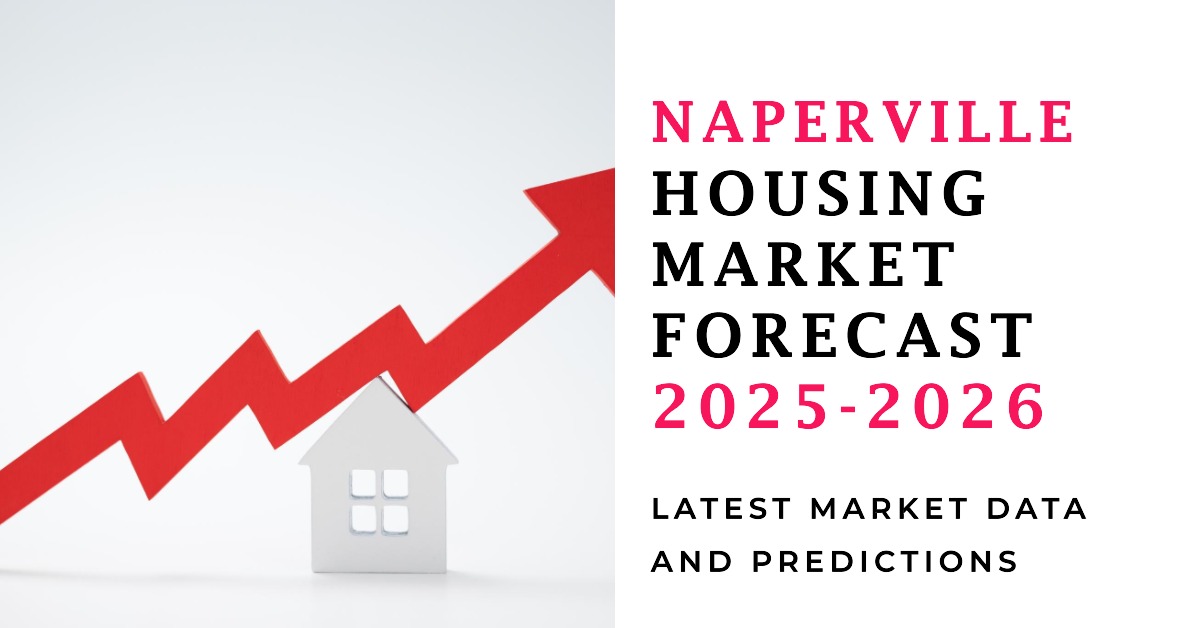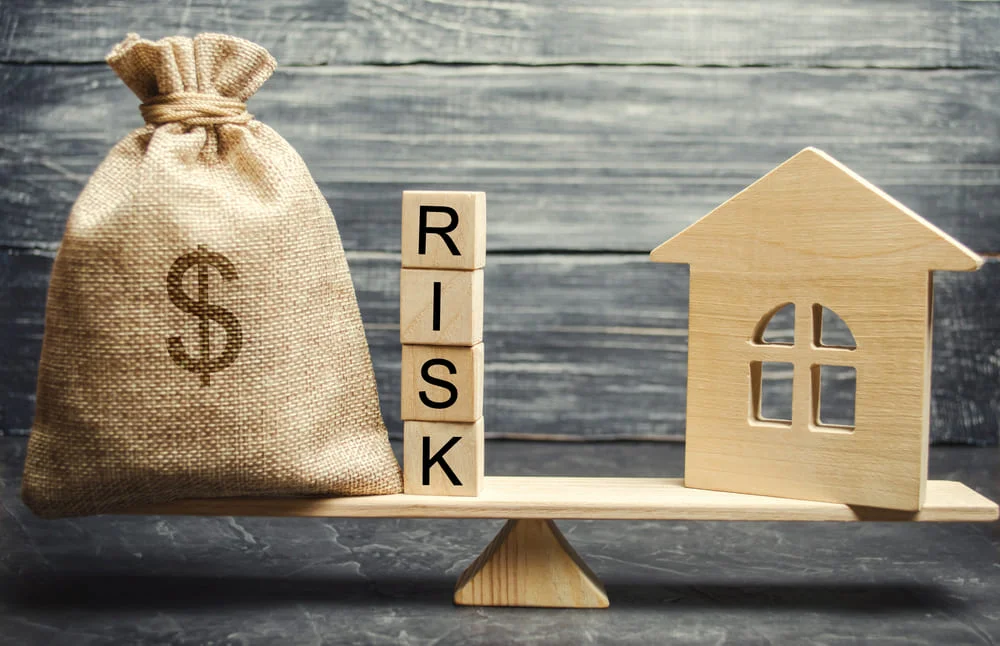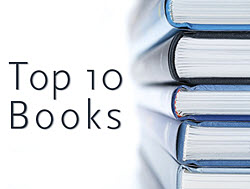The Naperville housing market is currently somewhat competitive. If you're looking to buy or sell a home in Naperville, IL, understanding the current trends is crucial. In short, home prices are up, houses are selling relatively quickly, and there's a decent amount of activity. Let's dive into the details.
Naperville Housing Market Trends 2025: What's Happening Right Now?
Home Sales
Let's get right into the numbers. The data from Redfin shows that in June 2025, there were 207 homes sold in Naperville. This is a 5.1% increase compared to the 197 homes sold in June of last year. This indicates that despite any fluctuations, the market is still quite active with properties changing hands. It also implies there's interest from buyers in the area.
Home Prices
One of the most important things to keep an eye on is home prices. In Naperville, the median sale price of a home in June 2025 was $665,000. This is a significant 11.0% increase compared to the median price last year. Also, the median sale price per square foot in Naperville is $264, up 8.2% since last year.
Here's a quick table summarizing the key price data:
| Metric | June 2025 | Year-over-Year Growth |
|---|---|---|
| Median Sale Price | $665,000 | +11.0% |
| Median Price Per Sq Ft | $264 | +8.2% |
Are Home Prices Dropping?
Based on the most recent data, home prices in Naperville are not dropping. Instead, they are showing a strong year-over-year increase. While market conditions can change, the current trend suggests that home values are holding steady and even appreciating. It's worth noting that real estate is very location-specific, and within Naperville, some neighborhoods might experience different trends.
How long are homes staying on the market in Naperville? The median days on market in June 2025 was 44 days. This is a slight decrease from 45 days last year. While homes aren't flying off the shelves overnight, they are selling at a reasonable pace.
Is Naperville a Buyer's or Seller's Housing Market?
Determining whether it’s a buyer's or seller's market depends on the balance between supply and demand. Currently, Naperville leans toward a slightly competitive market. Homes receive an average of 3 offers and sell in around 44 days. The average homes sell for about 1% above list price.
However, the market isn't overwhelmingly in favor of sellers. The sale-to-list price ratio is 101.1%, which means that homes are, on average, selling slightly above their asking price. The percentage of homes sold above list price is 49.8%, down -7.6 pt year-over-year, and homes with price drops is 21.0%, up +9.4 pt year-over-year.
Market Trends
Several factors are contributing to the current trends in the Naperville housing market:
- Low Inventory: A limited number of homes available for sale often drives up prices and creates a more competitive environment.
- Desirable Location: Naperville is consistently ranked as a desirable place to live due to its excellent schools, safe neighborhoods, and access to amenities.
- Interest Rates: Mortgage rates play a significant role in affordability and buyer demand.
- Migration: People are moving to Naperville from Peoria, Rockford, and New York more than any other metro. People are leaving Naperville for Cape Coral, Phoenix, and Sarasota.
Impact of High Mortgage Rates
Currently, U.S. weekly averages as of 07/17/2025, the average 30-year fixed mortgage rate is around 6.75% and 15-Yr FRM is about 5.92%, according to Primary Mortgage Market Survey® by Freddie Mac. The 30-year fixed-rate mortgage inched up this week and continues to stay within a narrow range under 7%. While overall affordability headwinds persist, rate stability coupled with moderately rising inventory may sway prospective buyers to act.
According to various forecasts, 30-year FRM rate will end 2025 between 6.0 to 6.5 percent. Borrowers should find comfort in the stability of mortgage rates, which have only fluctuated within a narrow 15-basis point range since mid-April.
While rates haven't skyrocketed, they are still elevated compared to the lows of the past few years. This impacts the market in a few ways:
- Reduced Affordability: Higher rates mean buyers can afford less house for the same monthly payment.
- Slower Demand: Some potential buyers may postpone their home search, waiting for rates to potentially decrease.
- Price Sensitivity: Buyers are more cautious about overpaying, knowing that higher rates will increase their overall cost.
My Thoughts and Observations
From my experience, the Naperville market is resilient due to its strong community and high quality of life. Even with fluctuating interest rates, the demand for housing in this area remains relatively strong. I've seen that homes in desirable neighborhoods and those with updated features still command top dollar. However, buyers are definitely more discerning and price-conscious than they were a few years ago.
Naperville Housing Market Forecast 2025-2026: Will it Crash?
A Chicago suburb renowned for its educational opportunities, amenities, and strategic location, Naperville has maintained a resilient housing market over the years. However, with shifting economic variables and national housing trends, the pressing question is: Will the Naperville housing market crash? Let's analyze and find out.
The Forecast for the Rest of 2025
Based on the current trends and expert predictions, here's what I anticipate for the remainder of 2025:
- Continued Price Appreciation, but at a Slower Pace: I expect home prices to continue rising, but not at the same rate as we've seen in the past year. The significant jump we saw year-over-year is likely to moderate. Factors like higher mortgage rates and potentially increasing inventory could put downward pressure on price growth. I would estimate a price increase of 3-5% for the remainder of 2025.
- Mortgage Rate Stability: Forecasts generally suggest that the 30-year FRM rate will end 2025 between 6.0 to 6.5 percent. This stability may encourage more buyers to enter the market, but this will be affected by the health of the economy.
- Slightly Increased Inventory: I anticipate a modest increase in the number of homes for sale. As prices plateau and more homeowners consider selling, we could see a bit more supply. This could shift the market slightly towards a more balanced state.
- Days on Market to Remain Relatively Stable: Expect homes to stay on the market for roughly the same amount of time, perhaps with a slight increase. Homes may take closer to 45-50 days to sell on average.
- Moderately Competitive Market: While it will likely remain a competitive market, expect a slight easing. Sellers might not have as many bidding wars as they did previously, and buyers may have a bit more negotiating power.
Key Factors to Watch for the Rest of 2025:
- Economic Growth: If the economy slows down, this could negatively impact the housing market. Job losses and decreased consumer confidence could lead to fewer buyers.
- Inflation: Persistent inflation could keep interest rates elevated, affecting affordability.
- New Construction: Any significant increase in new home construction could add to the housing supply and put downward pressure on prices.
Naperville Housing Market Forecast: 2026
Looking ahead to 2026 is even more challenging, but here are some potential scenarios:
- Price Stabilization or Slight Correction: Depending on economic conditions, 2026 could see a stabilization of home prices or even a slight correction. If interest rates remain high and inventory continues to rise, prices may flatten or even decline slightly in some areas. A price decrease of up to 2% is possible in a more bearish scenario.
- Interest Rate Outlook: The direction of interest rates will be critical. If the Federal Reserve begins to lower interest rates to stimulate the economy, this could boost buyer demand. If rates stay elevated, the market could remain sluggish.
- Demographic Shifts: Continued migration patterns will influence the demand for housing in Naperville. If the area continues to attract new residents, demand could remain strong. However, if more people begin to move out, this could weaken the market.
- Balanced Market or Slight Buyer's Market: By 2026, the Naperville market could shift towards a more balanced state or even a slight buyer's market, especially if inventory continues to increase. Buyers would have more choices, more negotiating power, and more time to make decisions.
Possible Table of Forecasts:
| Metric | Rest of 2025 Forecast | 2026 Forecast (Optimistic) | 2026 Forecast (Conservative) |
|---|---|---|---|
| Median Sale Price | +3-5% YoY Increase | +2-4% YoY Increase | -0-2% YoY Decrease/Flat |
| Mortgage Rate (30-yr FRM) | 6.0-6.5% | 5.5-6.0% | 6.5-7.0% |
| Days on Market | 45-50 Days | 40-45 Days | 50-60 Days |
| Market Condition | Moderately Competitive | Balanced | Slight Buyer's Market |
These forecasts are based on my analysis of current market data and expert opinions. However, they are not guarantees. The real estate market is complex and can be influenced by many factors that are difficult to predict. Always consult with a qualified real estate professional for personalized advice.
Should You Invest in the Naperville Real Estate Market in 2025?
Population Growth and Trends:
- Naperville has seen consistent population growth over the years, making it an attractive market for real estate investors. The city's appeal has led to an influx of residents, which can drive demand for housing, both for homeowners and renters.
- The city's population trends are characterized by a mix of young professionals, families, and retirees, providing a diverse pool of potential tenants. This diversity can help reduce vacancy rates and enhance the stability of your real estate investment.
Economy and Jobs:
- Naperville's economy is robust, with a strong job market and a variety of industries contributing to its success. The presence of several corporate headquarters and businesses creates a steady flow of employment opportunities, which can attract more residents and potential renters to the area.
- The local job market is diverse, including sectors such as healthcare, technology, education, and manufacturing. Diversification can be beneficial for real estate investors, as it reduces the risk associated with economic fluctuations in a single industry.
Livability and Other Factors:
- Naperville consistently ranks high in terms of livability factors, including excellent schools, low crime rates, and access to recreational amenities. These attributes make the city an appealing destination for families, contributing to the demand for both rental and ownership housing.
- The city's community-oriented culture and strong emphasis on safety make it an attractive place for people to settle down. This creates a stable pool of potential renters for real estate investors.
Rental Property Market Size and Growth:
- The rental property market in Naperville is substantial, catering to both long-term residents and short-term renters. With a growing population and an active job market, the demand for rental properties is likely to remain strong.
- The city's proximity to major urban centers, such as Chicago, enhances the appeal of Naperville as a rental market, as it attracts commuters and professionals seeking housing options outside the city.
Other Factors Related to Real Estate Investing:
- Naperville's real estate appreciation rates have historically shown positive growth. While past performance is not a guarantee of the future, it does indicate the potential for long-term gains for investors.
- The city's infrastructure and transportation networks are well-developed, making it easy for residents and renters to access the amenities and job opportunities both within Naperville and in neighboring cities.
- Investors should consider working with local real estate experts who have a deep understanding of the Naperville market, as well as staying informed about local regulations and property management best practices to maximize the potential of their investments.
Read More:





